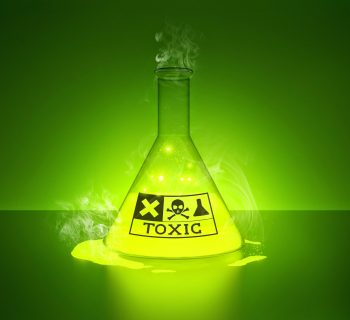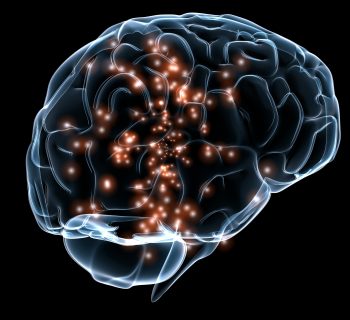When there’s a large acid load in your diet, your body neutralizes these acids by leaching alkaline minerals (calcium and magnesium) from your teeth, bones, and muscles. So it’s crucial to minimize acid foods and emphasize alkaline foods.
The measurement of acidity or alkalinity of any substance – including water and blood – is expressed as “pH.”
A pH of 7.0 is neutral, and that is the pH of pure (distilled) water.
A pH of less than 7.0 is acid. The lower the pH, the more acidic the solution.
A pH of over 7.0 is alkaline. The higher the pH, the more alkaline the solution.
You can grasp the nature of acidic and alkaline qualities by considering these pH comparisons of some common substances:
pH Subtance
Acidic Substances:
1.0 Stomach acid
2.2 Lemon juice
2.4 Vinegar
4.0 Wine and Beer
4.5 Tomatoes
6.6 Milk
Neutral Substances:
7.0 Distilled water
Alkaline Substances:
7.4 Human blood
8.0 Sea water
8.3 Baking Soda (Sodium Bicarbonate)
10.5 Milk of Magnesia
11.0 Ammonia
12.0 Soapy water
13.0 Lye (“drain cleaner”)
14.0 Sodium Hydroxide (NaOH)
All chemical reactions in your body are performed by chemicals called enzymes. And all enzymes function in a very narrow range of alkalinity. The optimal pH for our vital enzymes is right around 7.4. The pH of the blood is always kept at approximately 7.4.
Even the extreme ranges of “normal” pH (7.35 to 7.45) are always alkaline.[1] In other words, the blood NEVER becomes acidic. A blood pH below 7.2 is still “alkaline.”[2] But it is incompatible with life and would kill you.
So, if you hear someone say that “your body is too acidic” and a product like alkaline water will “make your system more alkaline,” don’t be fooled. Your blood can never be acidic. Likewise, no product can make you “more alkaline”. Only your diet can.
The body has many potent mechanisms for keeping the blood pH within the very narrow range of pH 7.35 – 7.45. Your blood is rich with powerful acid-buffering molecules, like bicarbonate and hemoglobin. They IMMEDIATELY neutralize any acids (hydrogen ions) that may be generated through food or metabolism.
When people refer to “acidic foods,” it doesn’t necessarily mean these foods have a pH below 7.0. The actual pH of a food is irrelevant. That’s because everything you eat is chewed up and dropped into a churning vat of hydrochloric acid – in your stomach.
When you eat food, especially food rich in protein, glands in the wall of your stomach secrete cascades of hydrochloric acid, strong enough to eat away linoleum.
This hydrochloric acid fills the stomach. It provides the perfect medium for the protein-splitting enzyme, pepsin, to begin reducing protein into its amino acid building-blocks. These amino acids will be reassembled by your liver and other tissues into your proteins.
Your stomach is so acidic that no food can change its acidity. Citrus fruits, vinegar, and vitamins such as ascorbic acid or folic acid do not change the acidity of your stomach – nor your bloodstream.
An entire bottle of calcium pills or antacids can’t change the acidity of your stomach for more than a few minutes. Likewise, taking calcium supplements or drinking “alkaline water” won’t change the pH of your blood. (So devices that “alkalize” water have no value.)
Consequently, all foods that leave your stomach are thoroughly mixed with hydrochloric acid. So they all have an acidic pH. Once they enter your small intestine, the bicarbonate-rich secretions from your pancreas neutralize the stomach acids.
These secretions bring the pH of the food stream into an alkaline range of 8.0, the perfect alkalinity for digesting starches.
So, no matter what you eat, the food in your stomach is acidic and the food in your intestines is alkaline.
Why do we refer to some foods as “acid-forming?” This doesn’t describe the actual pH of a food, such as the pH of 2 to 3 for oranges and lemons.
It’s not the organic acids that determine if a food is “acid-forming.” Rather, there’s a more elemental mechanism at work.
If a food’s pH is irrelevant, then why do we call certain foods “acid-forming”?
Meats, dairy, flour, and most beans, nuts, and grains contain a large amount of sulfur-containing amino acids – like taurine, methionine, cysteine and others. They also contain high-energy phosphorus-containing compounds, like adenosine triphosphate (ATP).
When combined with water, both sulfur and phosphorous create acidic compounds. (Think “sulfuric acid” and “phosphoric acid” from chemistry class.)
So when high protein foods – like meats, dairy, wheat flours, beans, nuts, and grains – are metabolized, the sulfur and phosphorus left behind combine with cellular water and generate sulfurous and phosphoric acids. This leaves an “acid ash”.
These acid residues must be neutralized, lest they adversely affect the pH of your bloodstream — something your body jealously guards against. This acid neutralization takes place almost instantaneously. It occurs in two places: (a) in your bloodstream and (b) within your bones.
In your bloodstream, the bicarbonate “albumin”, hemoglobin, and other molecules quickly quench the acidic hydrogen ions. This keeps the pH of your blood within the safe 7.35 – 7.45 range.
Next, the bone surfaces in your skeleton take up the acidic hydrogen ions from the blood flowing through your bone matrix, and neutralize them. This neutralization requires “borrowing” calcium atoms from your bone tissue. The borrowed calcium is released from your bones… and eventually, excreted in your urine.
For chemistry fans, the calcium in the bone tissue combines with the hydrogen ion in the blood to produce calcium bicarbonate (CaHCO3) and calcium hydrogen phosphate (CaHPO4.) These sacrificial calcium compounds – with their “captured” “H+” ions in the “HCO3” and “HPO4 groups – are excreted by the kidneys into the urine.
This is why meat, dairy, and other high protein foods can’t make your blood acidic. The acid residues they generate are neutralized in your bloodstream and bones.
But, your bones pay a price. That’s because bone is calcified protein. So when calcium is leached from your skeleton, your bone tissues dissolve and your skeleton loses strength.
This steady drain of calcium from your bones fosters a slow-motion crumble of your skeleton, along with hormone imbalances, lack of weight-bearing exercise, and deficiencies of vitamin D, K, boron and/or manganese.
This sets the stage for osteoporosis, with ribs that crack with a hug or a cough, and hips that fracture with a minor stumble.
So what’s wrong with “acid-forming” foods?
As the years go by, continual leaching of calcium from your skeleton can weaken your bone structure, and possibly injure other vital tissues.
People who eat the Standard American Diet (“S.A.D.”) – heavy with meat, dairy and refined flour products – have a high-acid residue. This has led to an epidemic of osteoporosis.
But even vegans and vegetarians who eat a high-grain, high-sugar, high-flour diet can weaken their bones via the same mechanisms. The reason you want to minimize “acid-ash” foods is to protect your bones – not to prevent your blood from “becoming acidic” – which cannot happen.
What about the pH of your morning urine or saliva?
If your morning urine has an acid pH (say, 5.5 or 6.2), that does NOT mean your body is acid. It merely states that you have healthy kidneys that are capable of excreting the sulfur and phosphorous atoms that you ate in last night’s dinner!
Thus, acidic morning urine is generally NOT a cause for concern. The only substance that’s acid – your urine – is in you bladder. So it’s no longer part of any cellular reactions in your body. It’s functionally already out of your body, and thus poses no risk to your health. So, an acid urine is NOT a sign that “your system is acid”, but it may well mean that your DIET is too acid forming, and that better food choices need to be made.
Incidentally, cranberries have been shown to help prevent recurrent urinary tract infections, but not because they make your urine acid. Rather, they contain chemicals that coat the bacteria in the urine and prevent them from sticking to the inside of the bladder wall.
The pH of your morning saliva is an even less useful measurement than your urine pH. The pH of your saliva reflects the actions of mouth bacteria that have spent all night eating sugars on the surfaces of your teeth. So, they don’t reflect the acidity of your blood.
You can’t taste a food’s pH!
You can’t taste whether foods are acid or alkaline-forming. In fact, most acid-forming foods taste good to most people. (Sugars and dairy products come to mind, for example.)
Citrus fruits demonstrate this point, too. Although oranges, grapefruits, and lemons taste acidic, and have a low pH, they’re actually alkaline-forming foods. Why? When citric acid is metabolized, the residue is alkaline. So don’t be afraid of citrus fruits – in fact, eat plenty of them.
So how can you eat a healthful, bone-gentle diet?
By contrast, most fruits and almost all fresh vegetables are alkaline forming. They leave an “alkaline ash” that’s gentler with your bones, reducing your kidney’s burden of acid secretion.
Does this mean vegans and vegetarians are invincible? Hardly. High protein foods like many nuts, grains, and beans tend to be acid-forming. Processed flour is also highly acidic.
So if you eat flour products three times a day, and skimpy portions of fruits and vegetables, you could be subjecting your bones to excessive acid loads, which drain calcium from your body and weaken your skeleton. Does this mean you need to eliminate all acid-forming foods from your diet?
No. Here’s a good rule of thumb. Alkaline-forming foods should make up about 80% of your diet. This will pay big benefits in stronger bones and better health. Indeed, eating a more alkaline-forming diet has even been shown to help restore bone health and strength.
In practical terms, this means eating larger portions of fruits and vegetables, minimizing flour products, and replacing acid-forming foods with their more alkaline-forming counterparts.
Base your diet around fruit-based breakfasts and lunch and dinners featuring salads, soups, steamed greens, vegetable stews, etc. Right here in the Mastery Program, we provide many delicious, bone-friendly meals.
Some additional, “pro-alkaline” tips:
First, replace acid-forming foods with their more alkaline-forming counterparts. For example:
Replace peanut butter (acid-forming) with almond butter (alkaline-forming)
Replace table salt (acid-forming) with sea salt (alkaline-forming)
Replace barley (acid-forming) with wild rice or whole oat groats (alkaline-forming)
Second, juice alkaline vegetables. High water content vegetables like celery and cucumber are mildly alkaline-forming, while leafy vegetables like kale and dandelion greens are very alkaline-forming.
Juicing alkaline vegetables is a way to concentrate the alkaline-forming minerals, nutrients, chlorophyll, and enzymes, and thus get the pH benefit without all of the chewing it would take to eat such a large volume of vegetables.
A brief primer on the chemistry of water and pH measurement.
A molecule of water is made up of 2 atoms of hydrogen and 1 atom of oxygen. This creates the familiar chemical formula of water as H2O. But it’s more usefully imagined here as H-O-H.
The water molecule can be viewed as one hydrogen atom (“H”) joined to an oxygen-hydrogen pair (“OH” – a hydroxyl ion). The hydrogen atom has a positive charge, so it’s called a hydrogen ion (“H+”), and the hydroxyl ion has a negative charge (“OH-“).
The atoms are not bound together with 100% tightness. So at any given second, there are many hydrogen atoms momentarily detaching from their “OH” partners. Sometimes, both hydrogen ions may detach, leaving a free oxygen atom to combine with another free oxygen atom to form molecular oxygen gas, O2.
If the number of hydrogen atoms (“H+” – which have a positive charge) equals the number of hydroxyl ions (“OH-”) with their negative charge, it is said the pH is 7.0. That’s the “neutral” pH of pure, distilled water.
If there are more hydrogen ions then hydroxyl ions, the water has a pH below 7.0 and is said to be acidic. The lower the pH, the more acidic. If there are more hydroxyl ions than hydrogen ions, the solution has a pH above 7.0 and is said to be alkaline.
If an element like chorine is added to water, it’s chemistry allows the dissociated oxygen atoms to find each other and bubble off into the air as molecular oxygen (O-O or “O2”).
When this happens, the water left behind is heavy with hydrogen atoms, and thus is said to be acidic. The more acidic, the lower the pH. Thus, chlorine added to water produces hydrochloric acid, with the formula of HCl.
If an element like sodium is added to water, it donates electrons to allow free hydrogen ions to find each other and bind into a molecule of molecular hydrogen gas (H-H or “H2”.) The hydrogen gas bubbles out of the water, leaving a preponderance of hydroxyl ions.
This hydroxyl-rich water is said to be an “alkaline solution” of sodium hydroxide, with the chemical formula of NaOH. The more the hydroxyl ions, the more alkaline the solution, the higher the pH.









